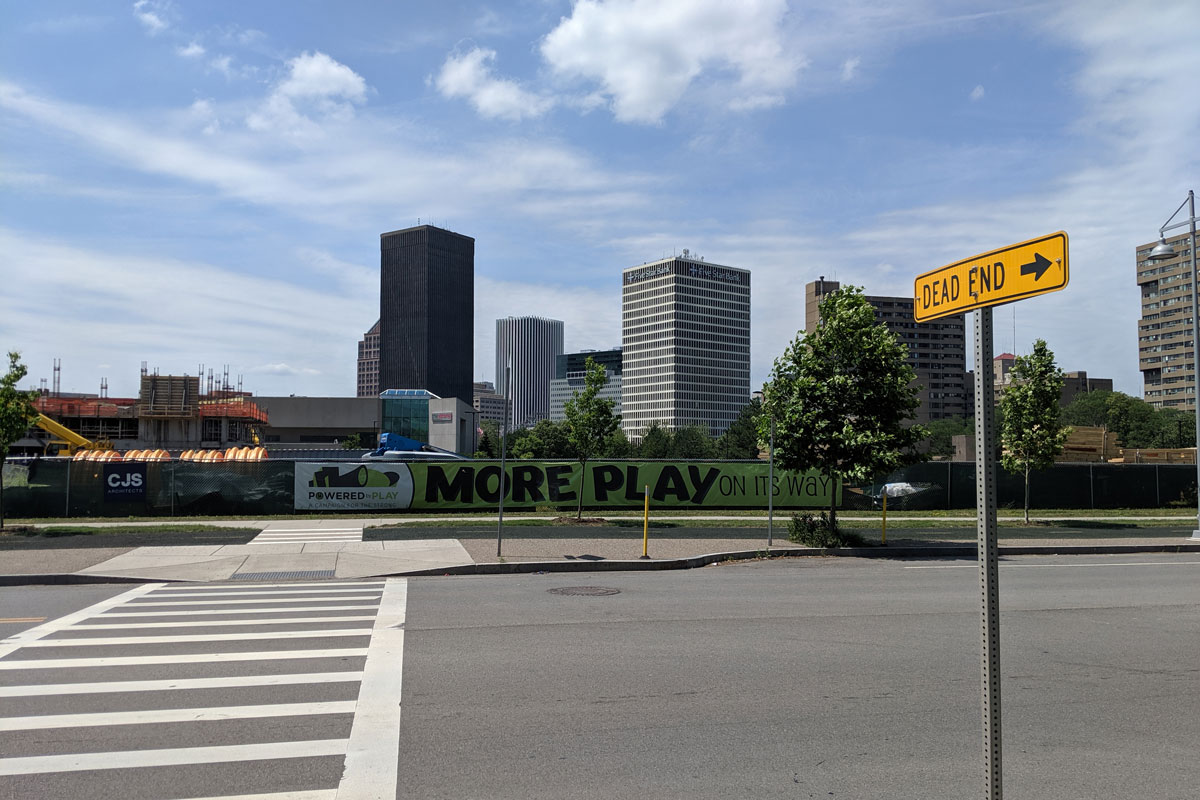Rochester’s Inner Loop was once the envy of urbanization. That was in the 1960s, when American cities were redesigned entirely to accommodate the car as a signal of a better future, much like elsewhere. Thanks to the speed at which Kodak and Xerox executives, for instance, could shift between their offices and suburban homes, Rochester earned the reputation of having the shortest commute in all of the U.S.
“Let us look more closely at what capitalists do. They begin the day with a certain amount of money and end the day with more of it. The next day they wake up and have to decide what to do with the extra money they gained the day before.”
– David Harvey, “The Right to the City”
Narrative theory, once a somewhat renegade critical device, easily becomes a convenient rhetorical tool of endless benefit to the author competing in the fast-paced self-help, business development, or personal branding markets. By reducing the whole of our inner and social lives to a simple idea of storytelling, a story becomes a mere function—it communicates meaning, conveys a message. The actual content of the story doesn’t matter so much as how that story is told. It’s formalism of a kind and is very useful for sales and marketing.
Talking about narrative in this way doesn’t touch on what stories actually do. That is, turn something into something else. A transformation takes place and it’s through that mutation as a process that value is created. The young man with great ideas who, by the end of the story, is a bald, bitter, and lifeless slob only means anything to us by virtue of his unfortunate decline. It’s not the end product that creates value (the sordid man), but the knowledge of his life in complete that we learn through the story. This is the skeleton upon which the meat of any meaning or message grows.
The Inner Loop East Transformation Project
One such story that has obsessed me over the past four years has been the transformation of a submerged highway into a long tract of land that will soon be home to a collection of luxury apartment complexes. The new buildings, to my eye at least, are nearly indistinguishable from a number of similar projects going up throughout Rochester’s “inner core.” (Quotes because this is newspeak for downtown.)
I’m rarely the first person anywhere. I’m always late to the party. Sure, there are times when I wish I was up there leading the avant garde waving some kind of flag, but hanging back can be useful, too. You get to see what the hasty heroes at the front screw up so you don’t make the same mistakes. The lag can be an especial advantage for large-scale urban development projects, where so much money is spent and so much is at stake for the people whose lives it will affect.
“The Inner Loop East Transformation Project converted a sunken section of expressway to the east of Downtown to an at-grade ‘complete street,’ that will include bicycle and walking paths.”
– City of Rochester website
Rochester’s Inner Loop was once the envy of urbanization. That was in the 1960s, when American cities were redesigned entirely to accommodate the car as a signal of a better future, much like elsewhere. Thanks to the speed at which Kodak and Xerox executives, for instance, could shift between their offices and suburban homes, Rochester earned the reputation of having the shortest commute in all of the U.S.
In 2011, the City of Rochester announced the Inner Loop East Transformation Project. City officials and planners decried the submerged concrete roadway—a municipal, publicly owned piece of infrastructure—as an eye sore. Language evoking the doom and gloom of Gothic castles or the Berlin Wall was always close by when describing the problem caused by the highway. It was a barrier separating the city and getting rid of it would “unify” Rochester’s inner core with the fledgling entertainment district on the eastern side of the Inner Loop.
“The moat is gone. Thanks to the support of our many partners, the barrier that once separated Downtown Rochester from our southeast neighborhoods has been replaced by a pedestrian and bicycle friendly complete street and six acres of real estate that is already creating jobs and driving economic activity. The Inner Loop East Transformation Project is already generating investments that are advancing our efforts to create more jobs, safer more vibrant neighborhoods and better educational opportunities for our citizens.”
– Rochester Mayor Lovely Warren (Nov. 22, 2017)
Construction—the transformation—began in earnest in 2016. Soil was taken from Lake Ontario (at Charlotte) and used to fill in the 2/3 of a mile stretching from Monroe Avenue / Chestnut Street northwards to where Union meets Main Street. Massive piles of rubble and debris soon emerged, making the space a surreal, post-human zone, exaggerating the inbetween-ness it occupied.

When the project of filling in the “moat” was complete, a vast empty track ran down the full length of Union Street. It reminded me of a broad promenade or a Soviet parade ground. It felt like a vast public space, even if largely unused.
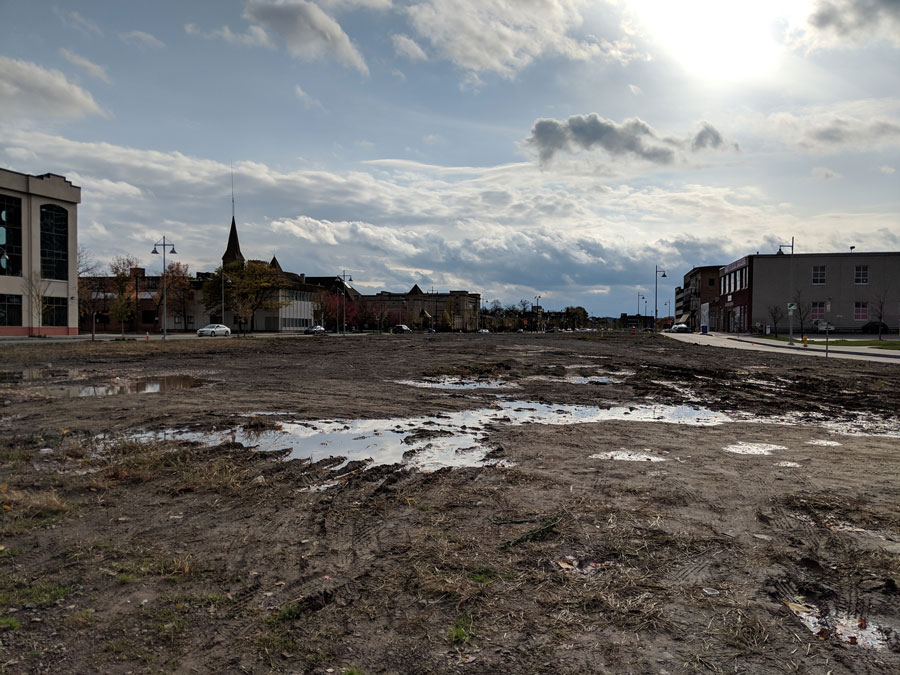
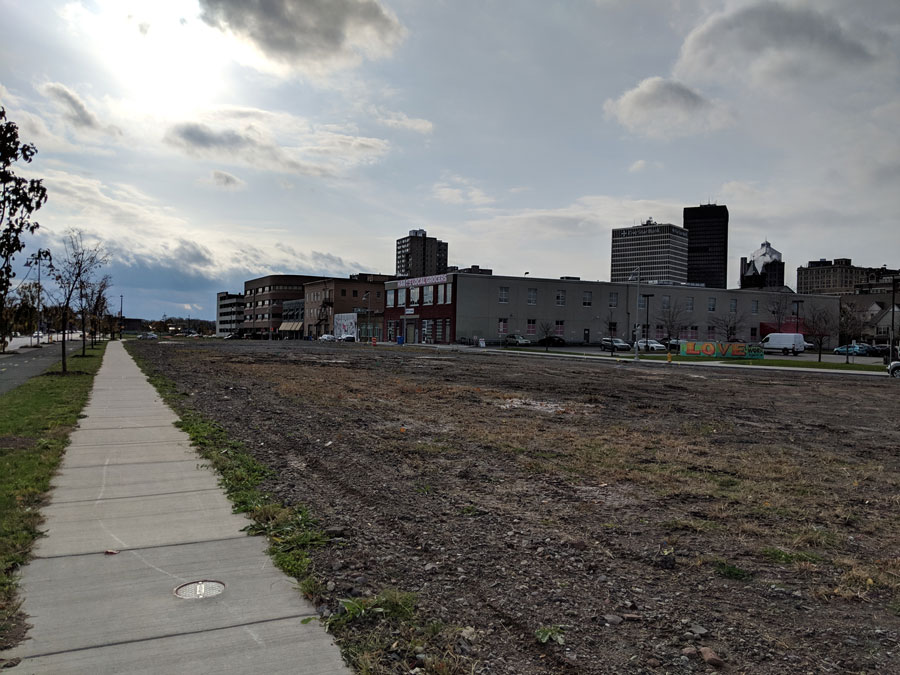
The argument for the project made a commonsense appeal to the public. Why would anyone want this ugly thing here that nobody uses? The change is an aesthetic one and, through that, expresses a hope on the part of city planners that market mechanisms can deliver the best kind of value for Rochester. (I plan to explore in future blog posts the nuances of this development’s working notion of value through a keyword that features prominently in press releases, project notice signs, and elsewhere: luxury.)
Other barriers exist in Rochester. It is an incredibly racially and economically segregated city. And, if you were to plot the geographic barriers of those differences, it might be the train tracks crossing the city east to west and the I-590 highway running north to south. It wouldn’t be the section of the Inner Loop now under development.
A new barrier
A new kind of division is taking shape, expressing something uglier than concrete infrastructure. The Inner Loop certainly wasn’t a pleasant space, but, as it was submerged, it was only a matter of crossing a bridge. In doing so, you would see Ten Manhattan Square, the Savannah, and Midtown Manor (known collectively as Southeast Towers), three brutalist affordable housing complexes built in the 1970s.
There is a brewery and a bar that I like on the east side of Union Street. They were good places to watch the fill-in progess. The Southeast Towers were a dominating feature of that landscape. Now they are hidden from view by the mixed-use luxury condo and retail complex that is nearly completed.
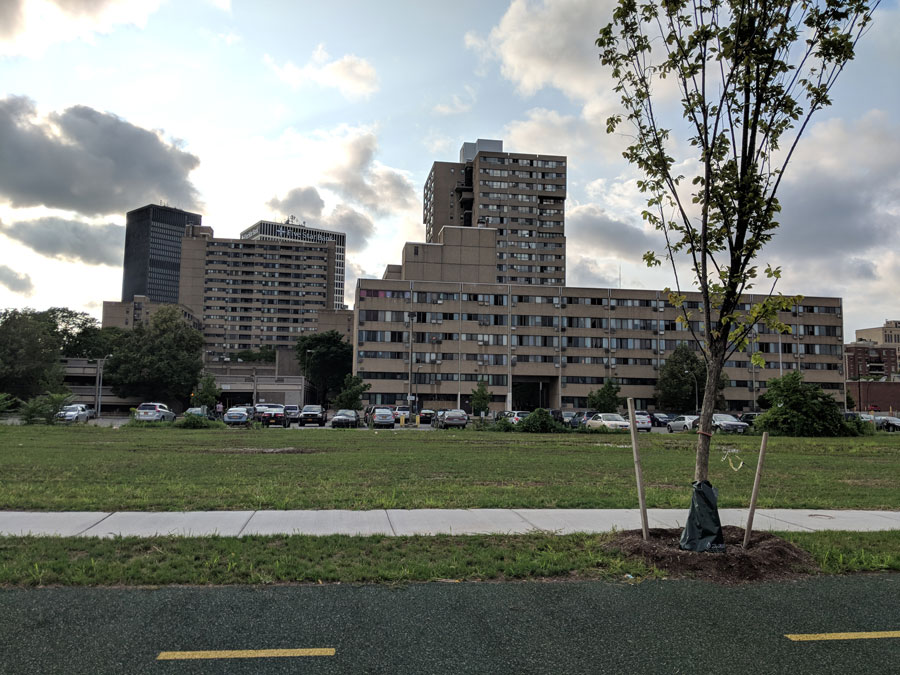
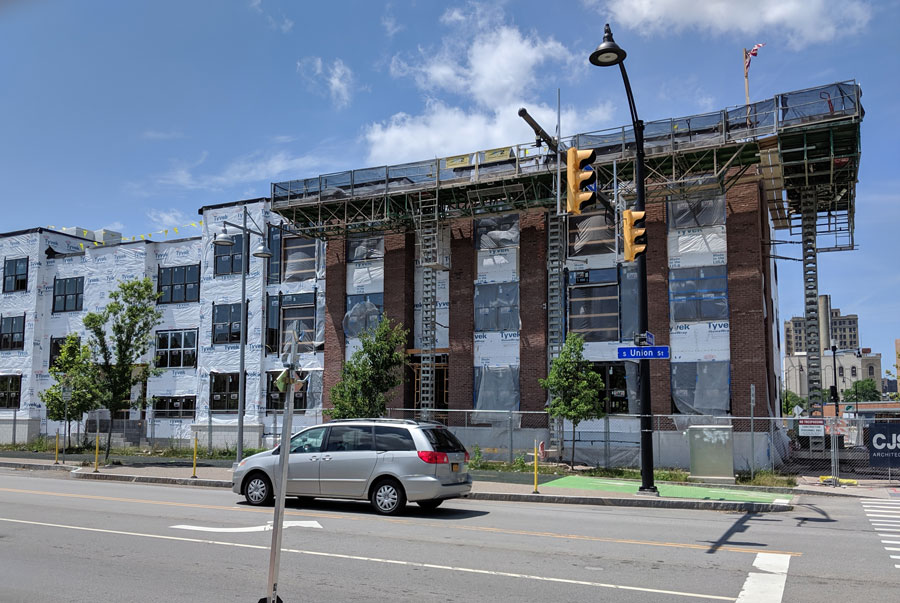
Walls express anxieties in what might be the neatest, most direct way. The Berlin Wall. Trump’s wall. There’s always a convalescent mood about walls, too. Peering at one from the outside, it’s easy to imagine the people on the other side huddled together in a frenzy to recuperate from whatever it is they fear—maybe it’s you.

Banal and unconcerned with their settings, Rochester’s wall of luxury condos express a tension we might feel in an increasingly fragile world. Throughout praise for the project there has been the claim that what’s being won is “more public space,” but what’s occurred has been the transformation of a municipally owned space into a completely privatized space.
The transformation of a bland, functional place into what is promised to be a more “human-centered” place comes as we are under increasing pressure to be resourceful and to take ownership of our problems. We’re pushed ever harder to be unique in our identities, exceptional in our thoughts, and innovative in our work. It’s a pressure that warps not only our inner lives, but the decisions that governments make. Because, in the end, how many luxury condos can there really be? And what’s not being built instead of them?
